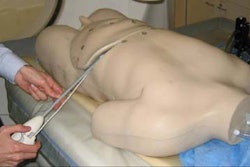In rapidly maturing markets where imaging centers are struggling to differentiate themselves, would you turn away from perhaps the single greatest opportunity to stand out for providing superior services? When worded that way, we'd be surprised if anyone actually said "No," but that's exactly what imaging centers and radiology departments are doing every day.
The key to a financially successful imaging center is to use the same strategy one would to win at the stock market -- don't invest in a stock that has topped out. More than just "buy low, sell high," this is about making your best educated guess at what's going to happen in a year, two years, and 10 years. Not only do you have to buy low, but you have to buy low and accelerating.
Where is the acceleration in the imaging world today? Increased magnet strength is picking up steam, but does that equate to increasing patient volume or revenue? We think that the coming years' adoption of 3-tesla will be just the pace of progress, and the price of doing business -- becoming another flavor of MRI -- just as open units are. One of the areas in which we anticipate real acceleration is in interventional care.
Interventional imaging is entering a new age, enhancing diagnosis and treatment. The most extreme examples of interventional imaging can be found in new products such as the Neuro II MRI scanner (IMRIS, Winnipeg, Manitoba) which actually tracks into the operating theater, or in suites where operating rooms are flanked on either side with MRI and PET/CT. Does this mean that interventional MRI requires a multimillion dollar investment? No. There are smaller steps to bring expanded areas of care to existing imaging centers.
One of the most promising areas we see is in the realm of MR-guided needle biopsies. The principal players in guided biopsies are the physician and the MRI, though the conversion from imaging center to something akin to an ambulatory surgical center requires a number of supporting roles. Setting aside the maze of different state and professional regulations, there are a few new requirements of your physical facility to support this first step toward interventional care.
Despite the fact that there are hand sinks in nearly every physician's exam room, they are still a rarity in magnet rooms. This is something of an institutional oversight with regard to infection control. While diagnostic imaging facilities aren't going to convert to doing brain surgery in the MRI, it is vital that we not minimize the importance of infection control. Facilities beginning needle biopsies in the MR suite often do so under the radar of infection control officers.
We are recommending that every imaging facility that has started (or is considering starting) needle biopsies or other invasive procedures should evaluate their suite with an eye toward infection control, from hand-washing stations, to housekeeping procedures, to heating ventilation and air conditioning (HVAC) requirements, even down to the flooring materials in the suite. When was the last time the floor in the magnet room was really cleaned?
In addition, we need to think about everything that we bring into the magnet room for interventional procedures -- sharps, carts, procedure lights, chairs, gasses, and so on. Has every element of a procedure been checked for MR-safe and MR-compatible equipment? What MR-safe equipment and systems can be built in, reducing the number of tools that need to be brought into the room (and the risk of bringing in an unsafe object)?
Because of the magnetic field and radio frequency (RF) shield, retrofitting a hand sink or ceiling-mounted procedure light into an existing magnet room can be more difficult than other locations within the hospital, but difficulty is no excuse for shrugging off proper infection control protocols.
MRI will continue to find more and more ways to grow from strictly diagnostic care into treatment pathways. If you have any doubt about that, consider the ramifications of the marriage of GE Healthcare (Chalfont St. Giles, U.K.) with Amersham; count the advertisements in your favorite radiology trade magazine for needle biopsy devices; and don't forget the advent of new magnetically tagged chemotherapy drugs.
Accompanying MR through this transition will put new demands on existing imaging facilities. Those imaging departments that keep up with the change in practice will find themselves open to a larger referral base, able to provide services for the most advanced diagnoses and treatments. In the current competitive marketplace for imaging services, those who don't adapt to the changing clinical applications will only drive another nail into their business-plan coffin.
By Robert Junk and Tobias Gilk
AuntMinnie.com contributing writers
July 8, 2005
To read an interview with Tobias Gilk on interventional MRI, click here.
Reprinted from www.mri-planning.com by permission of the authors. If you would like more information on any aspect of MR facility design or safety, please contact Robert Junk or Tobias Gilk at Jünk Architects.
Related Reading
Part II: Answers to the 10 questions to ask your architect about MRI suite design, April 7, 2005
Part I: 10 questions to ask your architect about MRI suite design, April 5, 2005
The 3-tesla MRI swap: Why it's not a simple upgrade, January 27, 2005
Chilled loop failure: How to break your magnet without even trying, December 8, 2004
HIPAA compliance strategies for MR control rooms, October 26, 2004
Copyright © 2005 Jünk Architects, PC



















